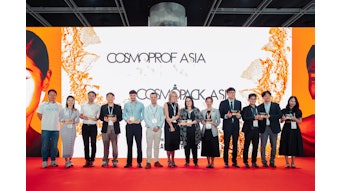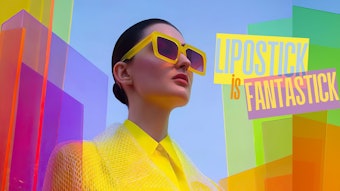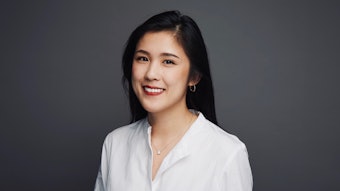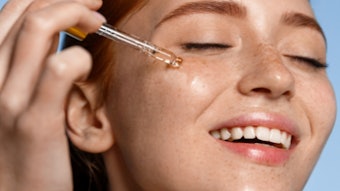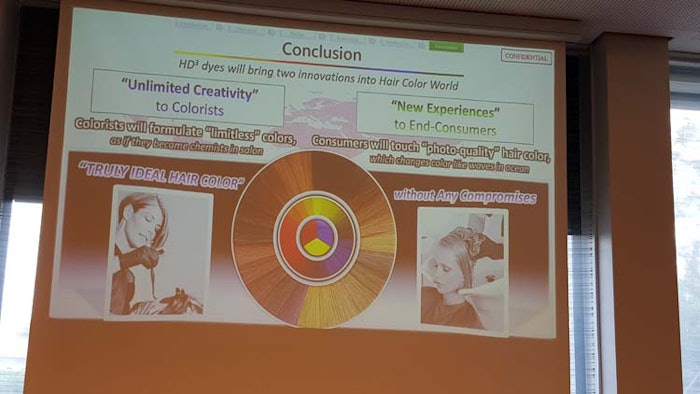
Kao inventors have taken a novel, bilayer approach to hair coloring and in the process, invented a new class of high definition physical hair dyes. These results were presented by Takahito Nakamura during the IFSCC in Munich.
The Premise
The $29 billion dollar hair color market is dominated by oxidative dyes, which deliver effective grey coverage and good durability. As Nakamura explained, oxidative dyes are small, colorless molecules the react chemically in hair when exposed to alkaline peroxide. This forms the color in hair.
"Such dyes are limited to dull and one-dimensional colors," Nakamura said, adding they also leave little room for innovation. As such, a molecular design effort was undertaken to develop an entirely new class of physical hair dyes: diazo dissociative dyes. These are intended for use as additives to conventional hair dyes, and potentially shampoos and conditioners, to create unique and dramatic hair color effects.
The precise structure and charge distribution of the dyes can create multi-layer dye patterns on and in the hair cortex.
Color Criteria
Throughout the development process, the designers aimed to meet several key criteria, including:
- Color intensity and brilliance—unlike existing dyes;
- A wide range of shades, based on the delivery of at least the three primary colors: blue, red and yellow;
- Stability with alkaline peroxide, for use with conventional dyes;
- Safety to skin, non-staining and durable against light exposure and shampooing; and
- Shine and multi-dimensional reflection.
Additional considerations included:
- Molecular weight; i.e., they should be small enough to penetrate the hair's cortex;
- Charge distribution, to enable wide application possibilities especially under the conditions of dyeing/bleaching processes;
- Absorption spectra, which relate to the performance of the dyes; and
- Log P, or the hydrophobicity/hydrophilicity of dyes to ensure proper formulation.
Brilliant Results
The search for dissociative anionic dyes to meet these criteria led to the identification of HC Blue 18, HC Red 18 and HC Yellow 16. These three dyes were named High Definition Dissociative Direct (HD3) dyes. Their chemistries (see Figure 1 in slideshow, above) provided a precise structure and charge distribution such that they can create multi-layer dye patterns on and in the hair cortex. According to Nakamura, this is due in part to their phenol-type constituent, which can penetrate hair to form an inner color layer that becomes visible with a given angle of incident light (see Figure 2 in slideshow, above).
"This dyeing pattern creates a remarkable 3D reflection of light that changes the color of hair as it moves," Nakamura explained (see the March 2019 Digital Edition for a video demonstration).
Conclusions
Nakamura concluded the use of these dyes could bring two novel innovations to the hair color market: 1) unlimited creativity—colorists can formulate with nearly limitless colors, making them like "chemists in a salon"; and 2) new color experiences for consumers—they can obtain photo-quality, 3D hair color, which moves like "waves in the ocean."

